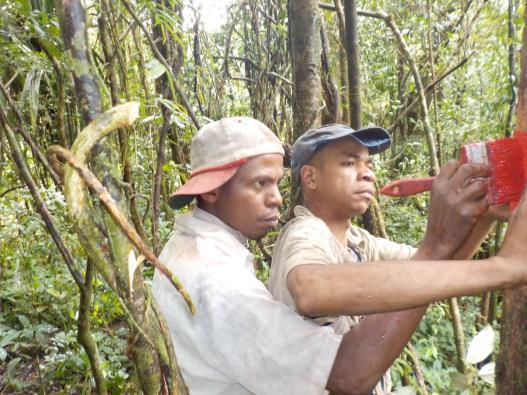| Problems viewing this email? Read the web version here.
|
|
 |
| DISCOVER
– PROTECT – INSPIRE |
|
|
|
|
|
|
|
|
 |
|
|
Known
as one of the most productive fisheries zones of Madagascar,
the BATAN marine zone - which includes the Bays of
Ampasindava, Tsimipaika, and Ambaro, together with the
archipelago of Nosy Be in the northwest of Madagascar – has a
new Fisheries Management Plan. The Plan was developed by WCS
in partnership with the Ministry of Aquatic Resources and
Fisheries and was formally adopted on February 15, 2018 in
Antananarivo. The new plan aims to establish a sustainable
balance between the existing fisheries in the area i.e.
small-scale, artisanal, recreational and industrial fisheries, thus ensuring equal
distribution of the wealth generated by fisheries to all
stakeholders. It also aims to maintain the quality of marine
resources ecosystem services while preserving the sensitive
habitats that are essential for the renewal of marine
resources that in turn increase the wellbeing of coastal
populations.
WCS is grateful to the Leona M. and Harry B.
Helmsley Charitable Trust’s support without whom this work
would not have been possible.
|
|
|
|
|
 |
|
|
|
As part of the realization of the “Sydney Promise” – a
presidential commitment made at the World Parks Congress in
Sydney, Australia, in 2014 to triple the surface of
Madagascar’s marine protected areas – the Critical Ecosystem
Partnership Fund (CEPF) funded WCS
Madagascar to initiate a process of national marine
conservation planning.
This process, which was carried out in close collaboration
with the Government of Madagascar and partner NGOs, aimed to
identify priority zones for marine conservation based on
ecological, socio-economic data.
The
process also examined the required legal framework and
sustainable financing mechanisms that would be needed for the
development of a future expanded marine protected area
network.
Next steps in the process include the integration of
the results of this work into national territorial planning
processes that are being carried out by the Government and
the identification of future MPAs within the priority zones.
We would like to thank the CEPF for its support for this
process and our Government and NGO partners for their close
collaboration throughout this process.
|
|
|
|
|
|
 |
|
|
WCS
Madagascar has developed a four pillar strategy for the
protection of some of the world’s most endangered lemur
species that are found in Makira Natural Park including the
Red Ruffed Lemur (Varecia rubra), the White-belted Ruffed
Lemur (Varecia variegata subcincta), and the Indri (Indri
indri). The strategy includes an integrated approach of
critical habitat restoration, hunting control, marking of the
park boundaries to limit incursions, and awareness-raising
with local partners.
Over the last four months, WCS organized 60 community patrols
within Makira Natural Park as part of this strategy.
Patrollers covered a distance of nearly 150km on foot to
monitor lemur abundance and check for traps or other signs of
hunting.
The results were encouraging: patrollers encountered
six diurnal lemur species out of the seven present in the
park, and destroyed 14 lemur traps. Next steps include
awareness sessions on regulations protecting lemurs.
WCS is grateful to IUCN’s SOS – Save Our Species (www.SaveOurSpecies.org) for their support of the project.

|
|
|
|
|
|
Contact:
Alison CLAUSEN
Director, Madagascar & Western Indian Ocean
Wildlife Conservation Society
Villa
Ifanomezantsoa
Près Lot II A 78 D
Soavimbahoaka Po Box 8500
Antananarivo 101 -
Madagascar
Tel: +261 22 597 89/Fax: +261 22
529 76
e-mail: wcsmad@wcsmad.org
|
|
|
|
|
|
Copyright© - 2018 - WCS Madagascar. |
|
|







